Tim Anderson's Blog, page 2
May 28, 2014
Sweet Tooth Party Tonight, Oh F*ck!
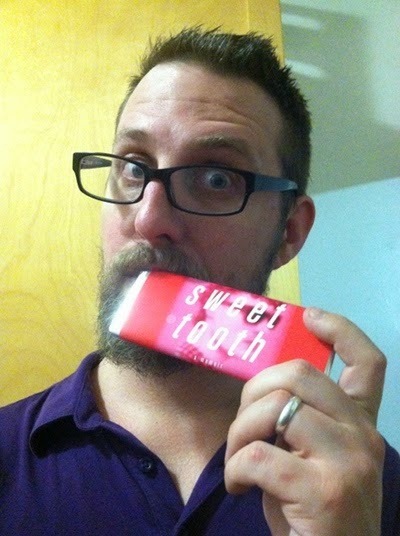
You guys, it's happening. Tonight, it's happening. All (some) will be revealed and much (all the) beer and wine in New York City will be consumed. It's gonna be a sloppy train wreck, and everyone loves those, so come on down to Wix Lounge 2nite at 6!
Published on May 28, 2014 12:59
May 19, 2014
Writing Process Blog Tour What?

Folks, I've been asked by my friend the great artist and illustrator Evan Turk to participate in a blog tour centered on writing process. Don't know what a blog tour is? Neither did I, really, but I like Evan's explanation of this particular one, so I'm just going to stone cold steal it wholesale without sending him a dime: "It's sort of a blog chain letter that asks authors to explain a little bit about how they write." You can read Evan's contribution here.
So, with this thing there are four questions I must answer, then I'll be passing the baton to two more writers I've recruited: Kenneth Walsh (aka Kenneth in the 212), whose book Wasn't Tomorrow Wonderful? is available now and will provide you with all the Blondie references you need in a summer read, and Michael Lopez-Saenz, whose first YA novel The Thousand Natural Shocks I really wish I'd had handy when I was a sweaty gay teenager hiding in the orchestra supply closet during lunch.
You can find out about my writing and such at my author website, timandersonauthor.com. I've written six books, (four already published, two forthcoming), including two adult books at four YA books. Anyhoo, let's get this thing started with question #1:
What am I currently working on?
So nosy! OK, so my latest book Sweet Tooth was just published and I've just finished the writing of my fourth YA historical fiction novel Massacre of the Miners (two have been published so far, City of the Dead and Ocean of Fire , and the third, People of the Plague, is out in September), so the decks are cleared now and I've begun work on a collection of travel stories with the working title Everybody Hates a Tourist. It'll feature stories of being a hapless visitor to places like Amsterdam, Buenos Aires, Toyama (Japan), London, Florence, Paris, Bangkok and Koh Phi Phi (Thailand), Playa del Carmen/Cozumel/Chichinitza (Mexico), and Blackpool (England), as well as American locales like Los Angeles, Coney Island, and St. Petersburg.
I have no plans right now for another YA historical fiction novel (I signed on for four books in the Horrors of History series from Charlesbridge), but I would like to try my hand at something for kids that's less serious and straight-faced. The HoH books were sometimes a stone cold bummer, since they dealt with horrific events in American history such as the Galveston hurricane of 1900 that killed more than 6,000 people. It's pretty inappropriate to attempt a zinger at pretty much any point in the narrative, you know? So I'd be into doing something less death-oriented, like a book for younger kids about a furry mammal who runs for political office or something? We'll see.
How does my work differ from others of its genre?
If we're talking about my books for adults I suppose my genre is "humorous memoir," so here's the easy answer: no other books in my genre are about me! I think in general my books are so specific in their topic that they necessarily stand apart. My first book Tune in Tokyo: The Gaijin Diaries , for example, is a travel memoir about two years I spent teaching English in Tokyo. Now, there have been quite a few memoirs of the foreigner's life in Japan, but I wanted mine to focus particularly on the urban experience of Tokyo and to offer a gay perspective, which was sorely missing from the canon, as it were.
Sweet Tooth is a gay diabetic memoir of adolescence in the '80s, and I'm pretty confident it's the first book you can say that about. At least this year. It's a very playful, though also often fraught, account of my type-1 diabetes diagnosis in 1988, when I was 15, and the simultaneous gay panic I was undergoing as my hormones officially went spastic. It's also a celebration of '80s pop culture, with lots of musical references (The Smiths, Echo and the Bunnymen), pop culture riffs (on Twin Peaks, for example), and misguided commentary on fashion (more paisley vests!) and haircare (more mousse!).

Why do I write what I write?
Tune in Tokyo and Sweet Tooth really just came out naturally--they were what my hands wanted to tap out when faced with a blank page on a computer screen. And actually, TiT came out of a series of email newsletters I sent to folks while I was in Japan--funny stories and updates that folks really responded to. It was the response that I got from readers that convinced me I could put a book together and there'd be an audience for it. So I actually outlined the book and wrote the first few chapters while I was still there. Then a hundred years later, after I jumped through all the publishing hoops (book proposal, agent, rewrites, interest, rejection, brick wall, debilitating sadness and frustration) I self-published it (and it was later picked up and re-released by Amazon Publishing) and was able to move on to Sweet Tooth, which was a book I'd had in my head for a long time and had already started writing.
How does my individual writing process work?
I get most of my writing done on the weekends, and I have to be very disciplined. Generally, I sit down at the computer, get on the Internet, and watch cat videos on YouTube for a while. Then I get up, maybe do some dishes (not too many!), put away some clothes, call my sister, call my mom, cuddle with my cat Stella, go check the mail, make some food, realize it's a beautiful day outside so I should really go for a bike ride, bike into Manhattan, maybe see a movie or meet a friend for coffee, then maybe go to the Y, get some dumplings, flip through the Village Voice, slowly become gripped by crippling guilt, rush home, and clickety clack on the computer for a few hours, breathless and sweating. The point is, I have a problem getting started so it helps if I'm handcuffed to my laptop or outfitted with a shock collar that will go off if I leave the apartment or go on the Internet for anything besides Wikipedia. And I absolutely must have noise--music or teevee or the vacuum cleaner, whatever. Helps me feel like something else is going on as I write. Once I get going, I'm good for it, but as I said, it takes discipline. Ish.
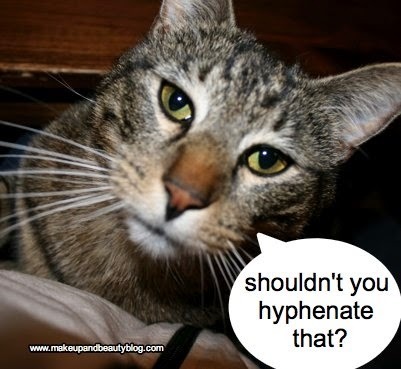
Thanks to Evan for the invitation! Handing it off now to Michael and Kenneth.
Published on May 19, 2014 06:55
May 15, 2014
Sweet Tooth Launch Party in NYC May 28!
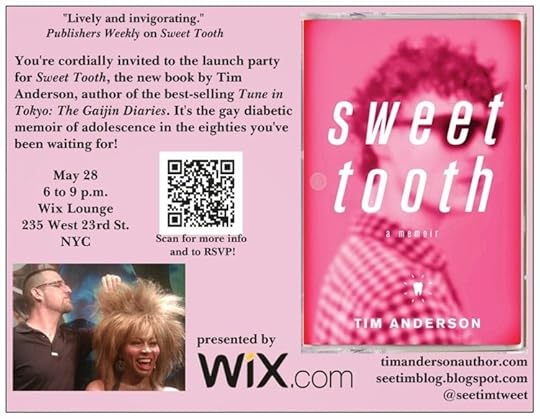
You guys, there's a party going on right here. A celebration to last throughout the year. These immortal words from Kool and the Gang couldn't be less true, actually. Because the party isn't until Wednesday, May 28, and it will only last a little over two hours, probably. Still, it'll be an opportunity to celebrate good times, come on!
Yes, the official Sweet Tooth launch party is happening in just a few short weeks. So if you're in NYC, come on down! It's being hosted by Wix.com at Wix Lounge in Chelsea, so it'll be near all your favorite gay bars, and there'll be free beer and wine, so you'll find me more entertaining. I'll be reading and signing copies of the book, and there will be munchies both sweet and savory. And there's no dress code, so I'll be wearing my Speedos and whatever H&M cardigan is closest to the couch that day. (They're all pretty awesome.) You should feel free to do the same.
You can get more information and RSVP here.
Published on May 15, 2014 09:34
May 12, 2014
Sweet Tooth Jukebox: Joy Division
 It's Sweet Tooth Jukebox time again, people. Wtf is Sweet Tooth, you're asking? It's this. Who am I? I am this. We good now? Ok, onward to seventies boy band Joy Division, the happy-go-lucky gaggle of young gargoyles above. They were from cheery Manchester, England, and came together in 1976 after two of them--Bernard Sumner and Peter Hook--saw the Sex Pistols play the Manchester Lesser Free Trade Hall. They started life as Warsaw before settling on the name Joy Division, which was apparently the name of a prostitution wing at a Nazi concentration camp. Provocative!
It's Sweet Tooth Jukebox time again, people. Wtf is Sweet Tooth, you're asking? It's this. Who am I? I am this. We good now? Ok, onward to seventies boy band Joy Division, the happy-go-lucky gaggle of young gargoyles above. They were from cheery Manchester, England, and came together in 1976 after two of them--Bernard Sumner and Peter Hook--saw the Sex Pistols play the Manchester Lesser Free Trade Hall. They started life as Warsaw before settling on the name Joy Division, which was apparently the name of a prostitution wing at a Nazi concentration camp. Provocative!Anyway, Joy Division was once called "the missing link between Elvis Presley and [Siouxsie and] the Banshees" by the NME, which, you know, is perhaps overstating it--at most they sound like Elvis sleepdancing with Bela Lugosi after a particularly blue Christmas. The point is Joy Division was dark. Dark like a basement playroom with black mirrored walls and only a dark blue lava lamp to offer you glimpses of your own debilitating sadness. Or something. What I'm trying to say is Joy Division gave you very few reasons to shake your fist in the air and proclaim "Life is totally worth living I'm going to call my mother!"
But boy did they have some midnight jams. Like my personal favorite, "She's Lost Control," which is utterly unembedable but can be heard here, The song, which is carried along by Peter Hook's bouncy yet droney baseline and Stephen Morris's stiff, robotic drumming, is about a girl having an epileptic seizure, with lead singer Ian Curtis playing the agitated, empathetic narrator. Curtis also suffered from an often debilitating epilepsy (he sometimes had seizures while performing), and his urgent delivery on "She's Lost Control" pretty much proves it. Also, this track is pretty much the sexiest song about epilepsy ever--a bold statement, but a true one.
The band released two studio albums--Unknown Pleasures and Closer--and were officially set for Next Big Thing status just before the release of the second when Curtis hung himself on the eve of the band's first American tour. This, you'll understand, was a stone cold bummer. Two singles were released in the wake of his death--"Love Will Tear Us Apart" and "Atmosphere"--and they are absolute stunners.
"Atmosphere" was actually the first Joy Division song I ever heard. I remember watching the mesmerizing video on 120 Minutes, being hypnotized by those military drums, those chilly synths, and that gorgeous baseline, and then being totally thrown off by Curtis's atonal singing. "Good Lord," I thought, "couldn't they have done a second take?" But it turns out the delicate intimacy of Curtis's vocals--sounding like a robot trying to emote for the first time--completely make sense for the song. It really is the most beautiful track of the post-punk era. Yep, even more beautiful than "Orgasm Addict."
Of course, the surviving members of Joy Division eventually regrouped and continued on as New Order, who over the next decade would show the world that all they really wanted to do was party. But Joy Division is the dark, dusky basement where the party got started, and the band's legend has only grown with time. (Check out the movies 24 Hour Party People and Control for the fun biopic treatment.) A generation of mopey teenagers clasped the band to its breast because they all knew the sad yet somehow comforting truth that no matter how depressed they felt, Ian Curtis probably felt much worse. Teenagers are so tacky.
Published on May 12, 2014 10:50
April 28, 2014
Sweet Tooth Jukebox: Echo and the Bunnymen

You guys, it's time once again to explore the musical touchstones of my award-not-winning new book Sweet Tooth , the gay diabetic memoir you've always wanted yet didn't really understand why. Up next: Liverpool's Echo and the Bunnymen. Now, truth be told, I probably would have fallen in love with these boys even if they didn't sound like mad romantic post-punk love fraggles. Reason #1: singer Ian McCulloch's hair. Reason #2: Ian McCulloch's lips. Reason #3: I just like the word "bunnymen." And reason #4: the hella handsome blonde rhythm section of Les Pattinson and Pete de Freitas. I mean, look at them. It's just... gah.

But the fact is, these attributes, however important and arousing, were just window dressing for some of the most exhilarating, operatic, and punchy music to come out of post-punk England. Echo and the Bunnymen's debut album Crocodiles is a classic, bursting with angular new wave classics like "Rescue"and, on the US version, "Do It Clean." The follow-up, Heaven Up Here, explored an icier pallet, with McColloch's sombre lyrical playfulness and the band's dramatic arrangements meshing to arrive at something more epic, yet just as raw. But it was on their third record Porcupine that they really justified their existence. From the swirling, mathematically precise strings on "The Cutter" to the staccato guitar and bouncy bass of "Back of Love" to the ode to Shakespeare contemporary John Webster (and the misnaming of one of his most famous tragedies, The Duchess of Malfi, which McColloch for some reason renders as "The Duchess of Malfior") on "My White Devil," through to the swaggering closer "In Bluer Skies," Porcupine is a frigid masterpiece.
And just when you figured they'd reached their high watermark, here came 1984's Ocean Rain, the quintessential Bunnymen album, with all the drama, spleen, and hooks of its predecessor, but with that ineffable, hard-to-pin-down, "I-don't-know-what" (as the French say) that pushed it into the official shortlist of desert island albums.
Did I listen to this album over and over while lying on my bed with my black light on? Would you even believe me if I said "no"?
Up next was the 1985 singles collection Songs to Learn and Sing, which featured one of their most swoon-worthy tracks, "Bring on the Dancing Horses." Also featured on the Pretty in Pink soundtrack, this song spontaneously got high school boys and girls across the land pregnant, constantly.
You know what else did? The band's 1987 single "Lips Like Sugar." This track was from their self-titled album from the same year, on which the band incorporated lots and lots of crystalline keyboards. In my opinion, it's always a good idea to incorporate lots of crystalline keyboards, so this album made me a furiously happy fop.
Of course, all lead singers with giant pillow lips eventually wants to go solo, so Ian McCulloch left the band after this album to embark on a fully unremarkable solo career. Also, very sadly, drummer Pete de Frietas was killed in a motorcycle accident in 1989. Bizarrely, the band continued with a new drummer and singer, releasing the actually not embarrassing album Reverberation in 1990. Still, it wasn't the Bunnymen.
After a few years of other projects, the three original surviving Bunnymen regrouped in 1997 and released Evergreen, a solid, melodic collection that saw them settling very nicely into middle age. They've put out an album every few years ever since and continue to tour. And as it happens, they've got a new one called Meteorites coming out later this month.
Of course, the Bunnymen's dancing horses have long since returned to the stable to play canasta, and anyway it's Echo and the Bunnymen Version 1.0 that really matters. You can't be beautiful forever in this cruel world, but you can on YouTube, so let's sit on the floor, turn on the black light, and soak in "The Killing Moon" while teasing our hair into a fright wig in honor of Ian and his bunny boys.
Published on April 28, 2014 07:06
April 15, 2014
Sweet Tooth Jukebox: Sinead O'Connor

Folks, it's time for another dispatch from the '80s vortex, brought to you by my new book Sweet Tooth. Buy it now, monkeys--the NSA already knows you want it.
Anyway, onward to the rock 'n roll: was there ever a more ferocious and foxy dame to appear on our teevee screens in the eighties than Sinead O'Connor circa 1987's The Lion and the Cobra ? Of course there wasn't. Two years later, Sinead would become extremely and exhaustingly famous for covering Prince's "Nothing Compares 2 U," for her rapturously received album I Do Not Want What I Haven't Got (which I've always been kind of lukewarm on), for tearing up a picture of the pope on Saturday Night Live, and for getting yelled at by Frank Sinatra. But oh, in the glorious year of 1987, the world was all "wtf?" when a tiny lightbulb-headed woman with pipes for days and limitless spleen to vent burst onto the scene and was everything any angry and sexually frustrated teenager could want in a pop star.
Nearly a teenager herself, Sinead was raw and bald and gorgeous and angry and Irish and pale and terrifying and flawless and maybe a little nuts. She could move from a dulcet coo to a siren's wail in the span of one line, and you never knew which Sinead to expect from moment to moment. The first song on The Lion and the Cobra, "Jackie," a spooky lament for a (literally) lost lover, perfectly encapsulated the spitfire anger, sadness, and aching melodrama at the heart of the album. "Jackie left on a cold dark night, telling me he'd be home," she begins, donning the persona of the ghost of a dead sailor's wife who spent the last twenty years of her life
Washing the sand with my salty tears
Searching the shores these long years
And I walk the seas forevermore
'Til I find my Jackie, oh.
Heavy! Here, have a listen:
Now, who among us hasn't found ourselves haunting the seven seas because we's lost our one true love in a shipwreck or a mutiny or a Scylla and Charybdis attack? It's the human condition!
The single "Mandinka" was a more upbeat rocker about "dancing the seven veils" and not knowing no shame, not feeling no pain and also, somehow, the Mankinka tribe in Africa. Sure, why not? It's also a song about a singer who can visit all the octaves, any time, whenever she wants. Don't believe me? Here:
Up next is Sinead's sex anthem, "I Want Your Hands on Me," which has the most air-drum-worthy beats in all the land. Truly one of the shwingiest songs of the decade, maybe even in human history, who can say? Did I listen to this song over and over while fantasizing about blowing the entire varsity soccer team behind the bleachers? You're awfully nosy!
But the song that really set Sinead O'Connor apart was the six-minute-plus epic "Troy," in which she had the audacity to compare a love affair she was suffering through to the sacking and burning of Troy during the Trojan War. (It's kind of like when in my diary I compared my teenage diabetic disappointment with Diet Shasta to the crucifixion of Christ, but this blog post isn't about me.) Thing is, she totally pulls it off, you guys. It all makes perfect sense. She was sacked and burned like Troy. She rose like a phoenix from the flames. And she gave hope to the rest of us, since we were all Trojans in the late eighties. Or something. The point is, the Internet is making it impossible for me to embed the video here because of "restrictions" or some shit. What is this, North Korea? So here's the lame youtube, audio only.
(Side fun fact: Did you know that Enya did the spoken word part on the song "Never Get Old"? I KNOW!)
Sinead went on to great fame and fortune with her next record, which catapulted her into the stratosphere on the heels of the gripping, dramatic video for "Nothing Compares 2 U," in which she gets so caught up in the emotion of it all that she sheds real tears. I, however, found this album pretty disappointing after the brittle majesty of The Lion and the Cobra. It didn't have the anger, the searing drama, the glistening, gorgeous mythos of her first. Though "Three Babies" and "Jump in the River" both nodded toward the lush and schizophrenic romanticism of her debut, the album as a whole was too tame, too prematurely adult.
Then, of course, Sinead became a pariah in the US overnight when she pulled the SNL stunt. She was knocked cleanly off her perch on top of the world and never regained it. Because when you've lost MC Hammer, you've lost... um, what exactly?
After her spectacular fall from grace, Sinead released a decent album of American standards called Am I Not Your Girl , which failed to do much for her in the marketplace. Her next album, 1994's Universal Mother , had some awesome tracks on it, but it was a little ponderous for the masses--Sinead had officially become a niche artist. She's put out an album every few years since then, none of them electrifying, some of them quite good, like her last one How About I Be Me and You Be You?
But any thoughts I have about Sinead O'Connor and her music always come back to the place where I found her: walking the seas, a despondent ghost, sing-howling about her dearly departed Jackie over an epic swirl of beautiful noise. It never got better than The Lion and the Cobra. And I've been waiting for a reissue of it ever since it was first released, so hurry up, record company, wtf are you waiting for? We need B-sides, alternate takes, remixes, previously unreleased tracks, liner notes, high-minded analyses, and praise heaped upon her by other artists. Sinead has earned it.
Come on, Rhino Entertainment (or whatever record company-type entity handles reissues of Ensign/Chrysalis albums), don't make me sic ghost-Sinead on you, cause she's scary when she's pissed.
Published on April 15, 2014 10:13
April 10, 2014
Publishers Weekly Loves Sweet Tooth, Thank God!

I knew this review was happening a few weeks ago but didn't know if it would be good or not. It's good! Not only do they describe Sweet Tooth as "lively and invigorating," they also use the word "man-candy," which I'm thinking might be a first for them? Maybe not, they're such saucy flirts over there at PW.
Published on April 10, 2014 04:06
April 9, 2014
Sweet Tooth Jukebox: Cocteau Twins
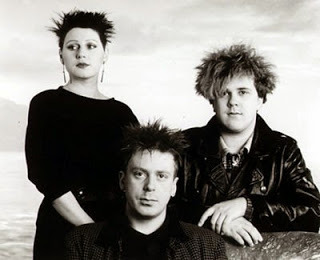
Time for another Sweet Tooth Jukebox dispatch, you guys. Up next: Cocteau Twins, the trio from the Whitest Ever Planet, whose ethereal, otherworldly, transcendent, and [INSERT HIFALUTIN ADJECTIVE HERE] music made grown men cry, grown women wonder where all the heroes went, and grown children wet the bed.
The Cocteaus released their first album Garlands in 1982 and their last (Milk and Kisses) in 1996 before breaking up, and, with the exception of one appearance at Coachella that almost happened in 2004 before singer Elizabeth Fraser backed out, they've never looked back. The Cocteaus are without a doubt one of the most influential bands in the modern era--they basically invented shoegazing, and they've informed the sound of countless artists, everyone from Grimes and Beach House to Portishead, Bon Iver, My Bloody Valentine, Chvrches, and even the Internet's favorite punching back Lana Del Rey. (That's right, I said it.) Prince was a fan, and so was Madonna. So there.
I could wax on and on about Scotland's pastiest-ever exports, but I'm going to make it easier on myself and you by just stone cold reprinting an essay I wrote for The Nervous Breakdown a few years ago on Elizabeth Fraser, chanteuse extraordinaire and beautiful oddball. Enjoy:
ENGLISH AS A SECOND LANGUAGE: A SALUTE TO COCTEAU TWINS' ELIZABETH FRASER
 The late eighties were a great time to be a fanboy of weirdo new wave ladysingers from outer space (mainly Britain). It seemed like every time you turned on your new favorite show, 120 Minutes, some wackadoodle dame dripping with otherworldly moxie was popping up sporting a leotard or a tutu or a completely bald head, leaving your mouth gaping in wonder at the sheer brilliance of it all. You had your helium-voiced ethereal fantasist (Kate Bush), your ferocious and feline Weimar Republic throwback/riding crop enthusiast (Siouxsie Sioux), your tiny elfin powder keg (Bjork of the Sugarcubes), your scary trannie android (Annie Lennox of Eurythmics), and your testy and tempestuous ingénue (Sinead O’Connor). All of these ladies had allure to burn and the musical chops to back it all up.
The late eighties were a great time to be a fanboy of weirdo new wave ladysingers from outer space (mainly Britain). It seemed like every time you turned on your new favorite show, 120 Minutes, some wackadoodle dame dripping with otherworldly moxie was popping up sporting a leotard or a tutu or a completely bald head, leaving your mouth gaping in wonder at the sheer brilliance of it all. You had your helium-voiced ethereal fantasist (Kate Bush), your ferocious and feline Weimar Republic throwback/riding crop enthusiast (Siouxsie Sioux), your tiny elfin powder keg (Bjork of the Sugarcubes), your scary trannie android (Annie Lennox of Eurythmics), and your testy and tempestuous ingénue (Sinead O’Connor). All of these ladies had allure to burn and the musical chops to back it all up.But there was one lady, from a very distant star (Grangemouth, Scotland), who truly stood head and shoulders above the rest in what she brought to the table. Not only was Elizabeth Fraser of the Cocteau Twins an alabaster-skinned ice princess with a mystifying hairstyle--she also had one of the most gorgeous voices to which pop music had ever born witness. With a staggering range that took it from the gutter to the stars in effortless swoops, and an easy way with melody and multi-tracked harmonies, Fraser’s voice was downright operatic in the sense that, unlike all of her peers, she sounded as if she could actually acquit herself quite nicely in an actual opera. (Of course, it would be one performed by an orchestra of hologram robots and staged on the distant planet of Mongo, but it would still be an opera.)
The first glimpse I got of Elizabeth Fraser was in 1988, when the video for “Carolyn’s Fingers,” a single from Blue Bell Knoll, the Cocteau Twins’ fifth album—and the first to get major label distribution in the U.S.—was in regular rotation on MTV’s “alternative” shows, such as the aforementioned 120 Minutes and its daytime counterpart PostModern MTV. She was exquisitely weird-looking--her short mess of kinky hair was tamed with Dep (or whatever) and styled (sort of) atop her head like a lopsided valentine, and she stood against a spectral blue background dressed in an all-white ensemble so un-rock-‘n-roll that Ms. Fraser wouldn’t have looked out of place if she’d worn it to an after-service luncheon down at the Presbyterian church. Her bandmates, guitarist Robin Guthrie and bassist Simon Raymonde, were also alluringly pale and otherworldly, but this was Elizabeth’s show.
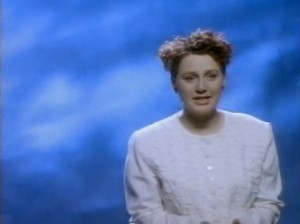 Her voice stopped me in my tracks, as did her ice blue eyes and her soft, smiling face. And the song itself was a gorgeous wash of glacial guitar and epic, angelic vocals beamed in from the celestial moons of Tatooine or some shit. But what were these mysterious words this woman was uttering that sounded so unlike any language I’d ever heard? Was she singing in Klingon? Elvish? Scottish?
Her voice stopped me in my tracks, as did her ice blue eyes and her soft, smiling face. And the song itself was a gorgeous wash of glacial guitar and epic, angelic vocals beamed in from the celestial moons of Tatooine or some shit. But what were these mysterious words this woman was uttering that sounded so unlike any language I’d ever heard? Was she singing in Klingon? Elvish? Scottish?After hearing this celestial chorale, I of course spent the next few months feverishly tracking down and buying up any and all Cocteau Twins imports I could get my sweaty little teenage hands on. And as I immersed myself in her band’s spacey, cold-to-the-touch back catalog, I learned one simple truth--there was no way Liz Fraser was singing any human language. She was just forming her mouth into sounds that sounded good and letting those sounds be the lyrics. Album after album, song after song, there was no telling what on earth was happening in her world. Was she singing about gumdrops and unicorns? Egg drop soup? Gang warfare? Yes. All of these things. Or none of them, maybe? Who knew? I had to travel far back in time, to the dark, primordial year of 1982, in order to hear Ms. Fraser utter any word you would find in a dictionary. A few songs on first album Garlands, amid all the twittery yelping and staccato-hiccup vocals Liz was once wont to engage in, included a handful of real phrases of English: “stars in my eyes, stars at my feet” – “I could die in a rosary” – “winged water, feathered river”. Your typical early Goth pap-- nothing that wouldn’t be out of place on a Bauhaus song. But after flirting with human language early on, Elizabeth Fraser dove headfirst down the rabbit hole and spent the rest of the eighties throwing the world’s linguists for a loop.
This was a revelation: that someone could dispense with language altogether and just use their voice as an instrument. It was also a singular self-effacement in the context of a decade that gave us such strong "Look at me!" attention hogs as Morrissey, Robert Smith of the Cure, and, yes, the ladies mentioned in the first paragraph above, not to mention the mainstream Queen Bees of the Me-decade like Madonna, Boy George, and Bono. We may not have been able to always figure out what all these singers were going on and on about (what’s a Lovecat, for example?), but they were most definitely singing real words used to convey any number of real meanings. “That Joke Isn’t Funny Anymore” – “Let’s Go to Bed” – “Love and Anger” – the singers behind all of these songs, delightfully weird as they may have been, were, when it came down to it, relatable as humans.
 But Elizabeth Fraser? She was a blurry blotch of brilliant ambiguity, an otherworldly seraph floating on a cloud of compelling, vertiginous vagueness and hiding behind a veil of hyper-imaginative deflection. Liz gave away nothing about herself in her lyrics. Even her song titles, though written in Roman letters, were bizarre transmissions from an outer-galactic polar volcano, though they were mercifully transcribed into English on the record sleeves: “A Kissed-out Red Floatboat”? “Cherry-Coloured Funk”? “The Itchy Glowbo Blow”? “Ella Megalast Burls Forever”? Whatever are we to make of these phrases, Elizabeth? Sure, sometimes she came down to earth and threw us a bone with a “Love’s Easy Tears” or a “Sigh’s Smell of Farewell,” or, you know, perhaps a “Blood Bitch,” just to prove that she’s human like the rest of us (and, at heart, an adorable little Goth). But then she’d go all sphinx-like once again with ditties like “Fotzepolitic” or “Aikea-Guinea.”
But Elizabeth Fraser? She was a blurry blotch of brilliant ambiguity, an otherworldly seraph floating on a cloud of compelling, vertiginous vagueness and hiding behind a veil of hyper-imaginative deflection. Liz gave away nothing about herself in her lyrics. Even her song titles, though written in Roman letters, were bizarre transmissions from an outer-galactic polar volcano, though they were mercifully transcribed into English on the record sleeves: “A Kissed-out Red Floatboat”? “Cherry-Coloured Funk”? “The Itchy Glowbo Blow”? “Ella Megalast Burls Forever”? Whatever are we to make of these phrases, Elizabeth? Sure, sometimes she came down to earth and threw us a bone with a “Love’s Easy Tears” or a “Sigh’s Smell of Farewell,” or, you know, perhaps a “Blood Bitch,” just to prove that she’s human like the rest of us (and, at heart, an adorable little Goth). But then she’d go all sphinx-like once again with ditties like “Fotzepolitic” or “Aikea-Guinea.”In contrast to her contemporaries, Elizabeth Fraser was a completely blank slate. The only entry-point into Liz’s world was her voice. No one could possibly know what that voice was saying, but it sure was beautiful. Therefore, the songs—these gorgeous, majestic, spine-tingling cathedrals of sound—could mean whatever you wanted them to mean. Did you just get dumped? Liz understands. Grandma died? Liz’ll take care of it. Failed your driver’s test? Liz has you covered. Coming to terms with your terrible homosexuality? Let Liz handle it. Just woke up with blood on your hands in a strange hotel room? Liz knows and she’ll make it better. (You should probably call your lawyer, though.)
Interestingly, it was when Liz started peppering her songs with more recognizable English on the Cocteau’s 1993 album Four Calendar Café that the internal dynamics within the band started fraying. On several tracks on the album, Elizabeth, who was romantically involved and had a child with guitarist Robin Guthrie, sang of domestic strife and romantic ambivalence. “Are you the right man for me/Or are you toxic for me?” she sang on single “Bluebeard.” "Is this what my body says? Use me, drain me, fall around me," she sighed on "Theft, and Wandering Around Lost." Though she employed a bit of English on the band’s final album, 1996’s Milk and Kisses, she largely reentered the Cloud of Lyrical Impenetrability on most of the songs such as “Eperdu,” “Tishbite,” and “Violaine.” After this last triumphant album, Fraser and Guthrie’s relationship, as well as the band they had made together, imploded and receded into legend.
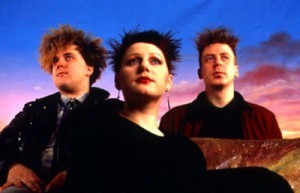 The Cocteau Twins released eight albums, eighteen singles and EPs, and a number of collaborative recordings during their fourteen-year run from 1982 to 1996. (The most memorable of the latter, by the way, is Liz and Guthrie’s cover of Tim Buckley’s “Song to the Siren,” which you should watch immediately. Do it now.) That’s a lot of songs, very few of which giving us even the slightest clue as to the Mystery of Liz. To this day Elizabeth Fraser remains an enigma wrapped in a riddle folded into a puzzle and then combined with a larger riddle and magically reduced to a smaller but still quite complicated puzzle that morphs into a conundrum that then disappears into a black hole. This is obvious.
The Cocteau Twins released eight albums, eighteen singles and EPs, and a number of collaborative recordings during their fourteen-year run from 1982 to 1996. (The most memorable of the latter, by the way, is Liz and Guthrie’s cover of Tim Buckley’s “Song to the Siren,” which you should watch immediately. Do it now.) That’s a lot of songs, very few of which giving us even the slightest clue as to the Mystery of Liz. To this day Elizabeth Fraser remains an enigma wrapped in a riddle folded into a puzzle and then combined with a larger riddle and magically reduced to a smaller but still quite complicated puzzle that morphs into a conundrum that then disappears into a black hole. This is obvious.Criminally, Ms. Fraser hasn’t released a solo album in the sixteen years since she was a Cocteau Twin, with her most high profile musical outing being the three tracks she sang on Massive Attack’s 1998 album Mezzanine. For years it has been rumored that she was working on a solo album for Blanco y Negro records, but nothing has ever materialized. She released one song called “Underwater” in 2000, but nobody heard it because it was a limited edition of only 200 copies.
Some exciting news came in 2005 when it was announced that the reformed Cocteau Twins would be headlining the Coachella Festival in California. But it was not to be--Elizabeth pulled out of the appearance after realizing she simply couldn’t face working with her ex-bandmates anymore. In November of 2009 she released a lovely song called “Moses” as a tribute to a friend who had recently died, and chatter about a solo album began anew. But now here we are in 2012, and it’s still radio silence from Our Lady Fraser.
 In a 2009 interview with the UK’s Guardian newspaper, Liz, was as hard to reach as ever, though for once, she laid out in plain English what was behind all her otherworldly warblings:
In a 2009 interview with the UK’s Guardian newspaper, Liz, was as hard to reach as ever, though for once, she laid out in plain English what was behind all her otherworldly warblings:She has always struggled to write lyrics, she says, but suddenly something will click and she “goes with the sound and the joy” – that’s why she sings sounds and words that have no meaning, of which she can only make sense later. As she puts it, “I can’t act. I can’t lie.”
So when you were singing along with Liz Fraser as she chirruped some flibberty lyrical nonsense in whatever song—was that a Cherry Coke mention in “Iceblink Luck”? A reference to Sudan in “I Wear Your Ring”? Something about lettuce leaves and Lois Lane in “Summerhead”?—she didn’t know what she was saying any more than you did. Perfect.
Elizabeth Fraser may not have known what her subconscious was conveying in the vast majority of the songs she sang, but she still sang like she meant every word.
Come back, Liz. It's been way too long, and right now the world needs more of your sublime cherry-coloured funk. Or, you know, whatever you want to call it.
Published on April 09, 2014 18:24
April 1, 2014
Sweet Tooth Jukebox: Siouxsie and the Banshees
Welcome to another installment of Sweet Tooth Jukebox, a series of posts inspired by the bands I memorialize in my new book Sweet Tooth, available now, just buy it already, Jesus. Sweet Tooth Jukebox is my chance to force you to watch videos of my favorite bands from back in the day and read my words about them because you were probably listening to Starship in the '80s. (I secretly was too.) Pay attention, there will be a quiz, probably.
Up next: Siouxsie and Her Banshees. This band got their start way back in 1976 when they played a hastily put together set at the 100 Club Punk Festival in London. If memory serves, Sid Vicious was on drums that night. (Can someone fact check that for me?) Their set included a decidedly sacrilegious version of "The Lord's Prayer," and they made an awful racket, by all accounts. It took them two years to get a record deal, by which point punk was kind of over, so their debut album The Scream is perhaps one of the first post-punk records. Between 1978 and 1996, the Banshees released 11 studio albums that are amazingly varied in style. Their first two were angular and angry, they turned more pop on 1980's Kaleidoscope, and then basically invented goth on 1981's classic Juju, which featured the single "Spellbound," the video of which showed Siouxsie at her most feline and her eye-makeup at its most turbo-charged.
And let's face it, we all had huge crushes on Budgie the drummer. What was not to love? He was one of the best-ever rock drummers, he had bleached-blonde hair and alabaster skin, and he always walked around dressed like a Victorian carnie. My dream date!
The band cycled through a few more styles--whoozy psychedelia on A Kiss in the Dreamhouse and Hyaena (check out the video for "Dear Prudence" above, in which Siouxsie's rocking some hairy-ass armpits), slithery modern rock on Tinderbox--before releasing Peepshow in 1988, a collection of goth cabaret torch songs that spawned the insanely danceable single "Peek-A-Boo," which became their highest-charting single to date in the States. (Fun fact: if you want me to dance at your party like a drunk marionette, give me some booze and put on this song.)
Now, some Banshees fans will quibble with my posting of the video for "Peek-a-Boo" up top, because at the time it was viewed by diehards as kind of a sellout to pop radio. People who think this are wrong. This song is genius, and the video is fun as hell. Siouxsie's got a Cabaret bob cut and some country/western leotard-type sleeveless body suit with long-ass gloves, the boys are dancing terribly in the shadows and wearing masks, there's a bunch of animated projections on faces and such, there are tassels, there are hella big feather fans. What else could you want from a video? The answer is: none more black.
The less said about the Banshees' last two albums, Superstition and The Rapture, the better, because damn are they awful. But let's just say that up through Peepshow, this band was pretty damn flawless. Even their meh songs had at least a groovy bass line you could ride or some glass-shattering yelps from Our Lady Sioux. They were constantly reinventing themselves and never dragging their feet. And they had the best B-sides in the business, hands down. (Seriously, get their B-sides collection Downside Up and be amazed.)
In conclusion, Siouxsie was my fairy godmother in high school and she got me a date for the prom, the end.
Published on April 01, 2014 08:53
March 24, 2014
Sweet Tooth Jukebox: The Smiths
Welcome to the inaugural Sweet Tooth Jukebox post, in which I'll be posting videos and typing out a bunch of nonsense about the bands featured in my new book about my gay, diabetic adolescence in the eighties, Sweet Tooth, which is available now so go buy it, I'll wait here.
Of course, we have to start with The Smiths, as they are all over Sweet Tooth and they even gave a few chapters their titles. But where to start with The Smiths? They are a wonderland of somber and sick hyper-melodrama, a fantasia of feral self-hate and brilliant self-assurance, simultaneously depressing and freaking hilarious. And oh, the one-liners. Why do we love The Smiths? Probably for some of the same reasons that others hate them, chief of these being their swishy lead singer Morrissey, who was always emoting about some boy or girl who left him at the train station or the iron bridge or Wally Range or the Holy Name Church or Buckingham Palace, all while barely wearing his sheer button-up shirt as he swung and swayed like a teenage girl dancing in front of her bedroom mirror and singing into her hairbrush. He irritated the crap out of some folks, but I couldn't help but admire the man--after all, it takes balls to be that aggressively fey.
But as magnetic as Moz was, he wasn't the sum total of The Smiths. There was also, of course, his writing partner Johnny Marr, the king of the breezy guitar earworm, whose busy and infectious fretwork was a sturdy counterpoint to Morrissey's flights of lyrical fancy; and the other two guys, Mike Joyce and Andy Rourke, who made up a solid rhythm section and, even more importantly, brought some reserved, boyish sex appeal that Morrissey couldn't manage because he was too busy swishing and swaying, beating himself langorously with a flower bouquet, and making out with his microphone.
The Smiths were only together for five years, but in that time they released an epic number of amazing tunes. Number one on my list is in the YouTube up top: "The Boy with the Thorn in His Side" from their album The Queen is Dead. Your number one might be different, but you'd be wrong. Sure, "How Soon Is Now?", "Cemetery Gates," "This Charming Man," and "That Joke Isn't Funny Anymore" make great cases for themselves as the King of Smiths Mountain, but none of them has this perfect a mixture of mopey-eyed romanticism, soaring gayrotica, lush strings, a tight 'n jangly pop bounce, and a melody to die/kill for. Plus, the song contains one of Morrissey's most poignant lines in "When you want to live/how do you start?/Where do you go?/Who do you need to know?" (I've never gotten a satisfying answer to any of those questions, btw.)
In short, for this ex-new wave boy, The Smiths are the best band the world has ever produced. They're the Fancy Feast of pop, as my cat Stella once remarked to me, and Stella, even though she's a Republican, knows her pop history.
Got a favorite Smiths tune that's different from mine? Justify yourself in the comments, maybe!
Published on March 24, 2014 18:09



